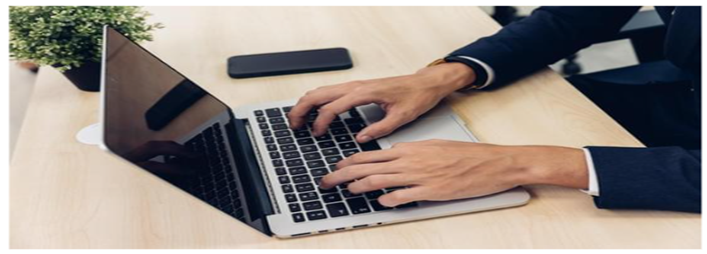🎯 Prompt 1: Common Question Answering Strategy

- Generate answers for 5 most common interview questions for [Job Title].
- Use the STAR method where applicable.
- Provide a key talking point for each answer.
- Present in a table with “Question”, “Answer”, and “Key Point” columns.
- My resume: [Paste resume]. Job description: [ Paste Job Description]
🎯 Prompt 2: Company Research Synthesizer
- Analyze [Company Name]’s website and recent news.
- Create 5 talking points about their mission, values, and recent achievements.
- Suggest ways to naturally incorporate these into my answers.
- Include 2 questions to ask the interviewer. Job description: [ Paste Job Description]
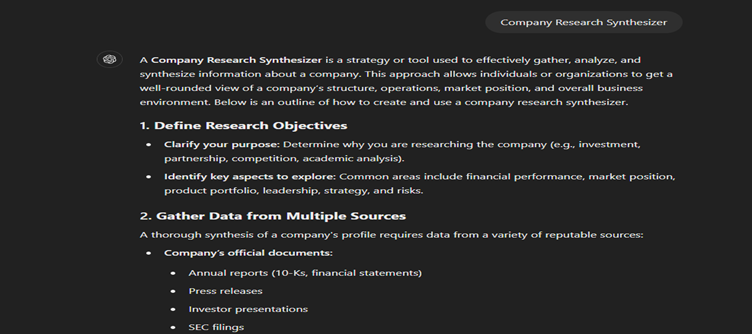
🎯 Prompt 3: Accomplishment Story Polisher

- Refine my top 3 professional achievements relevant to [Job Title].
- Craft concise STAR method stories for each.
- Provide versions in 30 seconds, 1 minute, and 2 minutes.
- Include transition phrases to adapt stories to different questions.
- My resume: [Paste resume]. Job description: [ Paste Job Description]
🎯 Prompt 4: Weakness Question Tackler
- Develop a strategic answer for “What’s your greatest weakness?” for [Job Title].
- Provide 3 versions: skill-based, personality-based, and work style-based.
- Include how I’m actively improving in each area.
- Limit each response to 75 words.
- My resume: [Paste resume]. Job description: [ Paste Job Description]
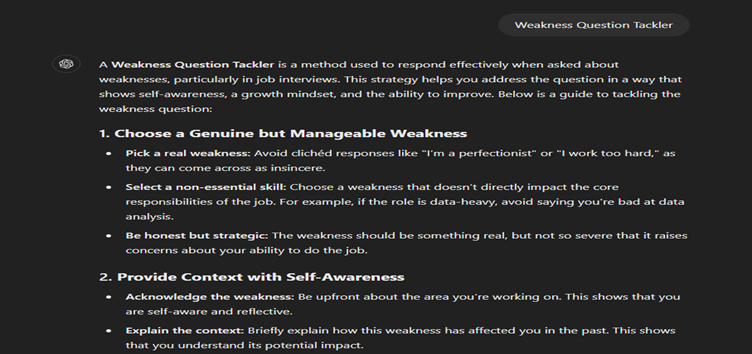
🎯 Prompt 5: Strategic Interview Question Creator
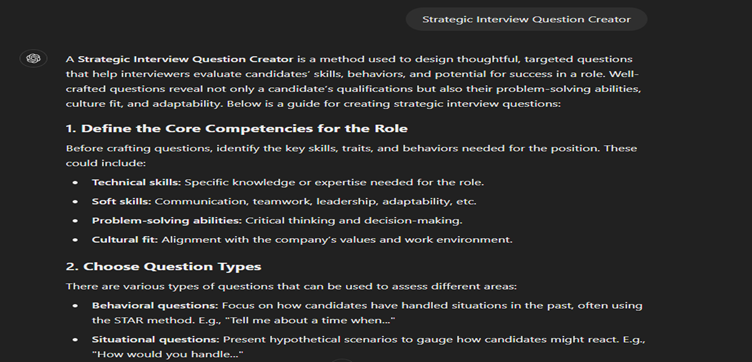
- Develop 10 insightful questions to ask in a [Job Title] interview.
- For each, provide the question’s purpose and a follow-up response that showcases my skills or knowledge.
- Create a prioritization system based on interview stages.
- Present in a table with columns for “Question,” “Purpose,” and “My Follow-up.”
- My career goals: [Your Career Goals].
🎯 Prompt 6: Behavioral Question Preparation
- Generate 10 potential behavioral questions for [Job Title].
- For each, provide a framework to structure my response.
- Include power phrases and industry-specific terminology to incorporate.
- My resume: [Paste resume]. Job description: [Paste Job Description].
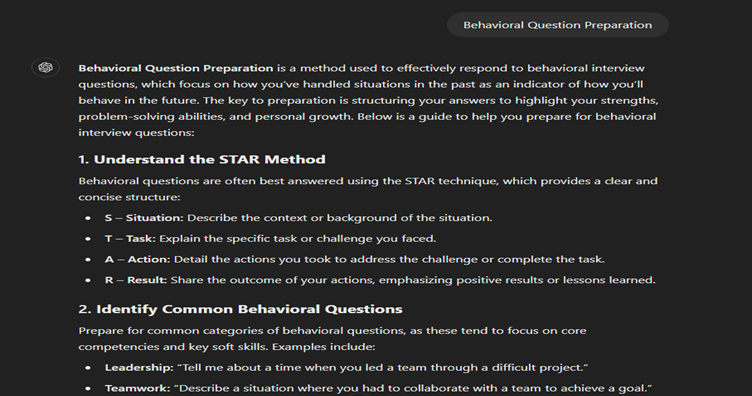
🎯 Prompt 7: Technical Interview Simulator
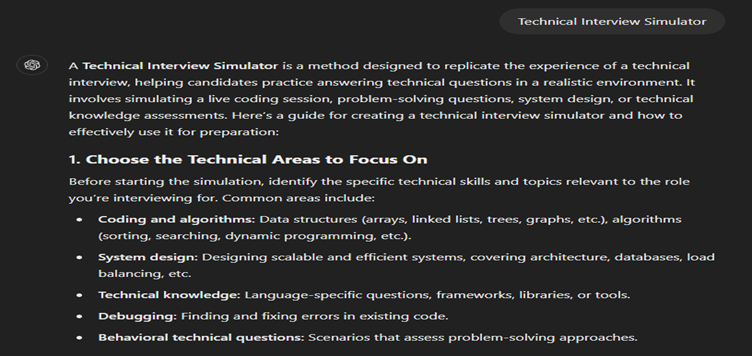
- Design a mini technical interview for [Job Title].
- Include 3 technical questions or scenarios.
- Provide ideal answer structures and evaluation criteria for each.
- Suggest resources to brush up on key technical skills.
- My resume: [Paste resume]. Job description: [Paste Job Description].
🎯 Prompt 8: Cultural Fit Demonstrator
- Analyze [Company Name]’s culture.
- Prepare answers to demonstrate alignment with their values.
- Provide examples from my experience for each value.
- Create a list of questions to ask about company culture.
- My resume: [Paste resume]. Company values: [Company Values].

🎯 Prompt 9: Interview Closing Statement Crafter
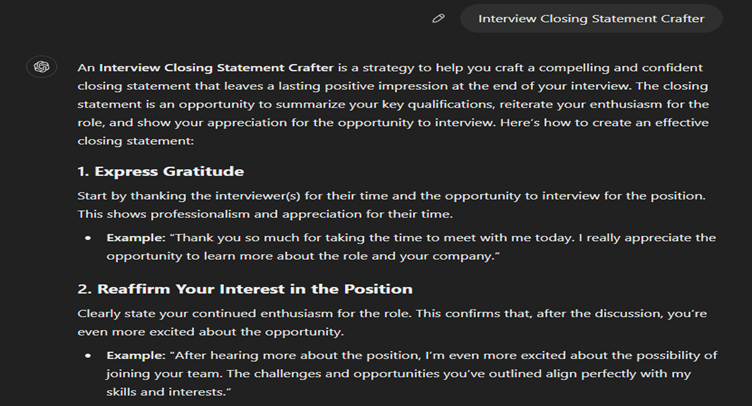
- Write 3 versions of a strong closing statement for [Job Title] interview.
- Include a summary of fit, enthusiasm for the role, and next steps.
- Provide a confident response to “Do you have any questions for us?” Keep each version under 100 words.
- My resume: [Paste resume].
- Job description: [ Paste Job Description].
🎯 Prompt 10: Post-Interview Thank You Email Template
- Create a thank you email template for after the [Job Title] interview.
- Include personalization points, reiteration of interest, and any follow-up information promised.
- Provide versions for individual and panel interviews.
- Suggest send timing. Keep under 150 words. Interview highlights


Frequently Asked Questions

How can ChatGPT help me prepare for a job interview?
- ChatGPT can simulate common interview questions based on your industry, position, and experience level. You can practice answering these questions, get feedback on your responses, and improve your confidence.
- Example Prompt: :”Act as an interviewer for a marketing position. Ask me 5 common interview questions and evaluate my responses.”

What are some general questions I can practice with?
- You can practice common interview questions that come up in almost every job interview.

How do I practice questions related to my past experience?
- You can ask ChatGPT to help you highlight your past job experiences and achievements.

Can ChatGPT help me answer tough interview questions?
- Absolutely! You can prepare for tricky questions like salary expectations or weaknesses.

How do I ask ChatGPT for industry-specific questions?
- You can prompt ChatGPT for questions tailored to your industry, such as finance, healthcare, or education


